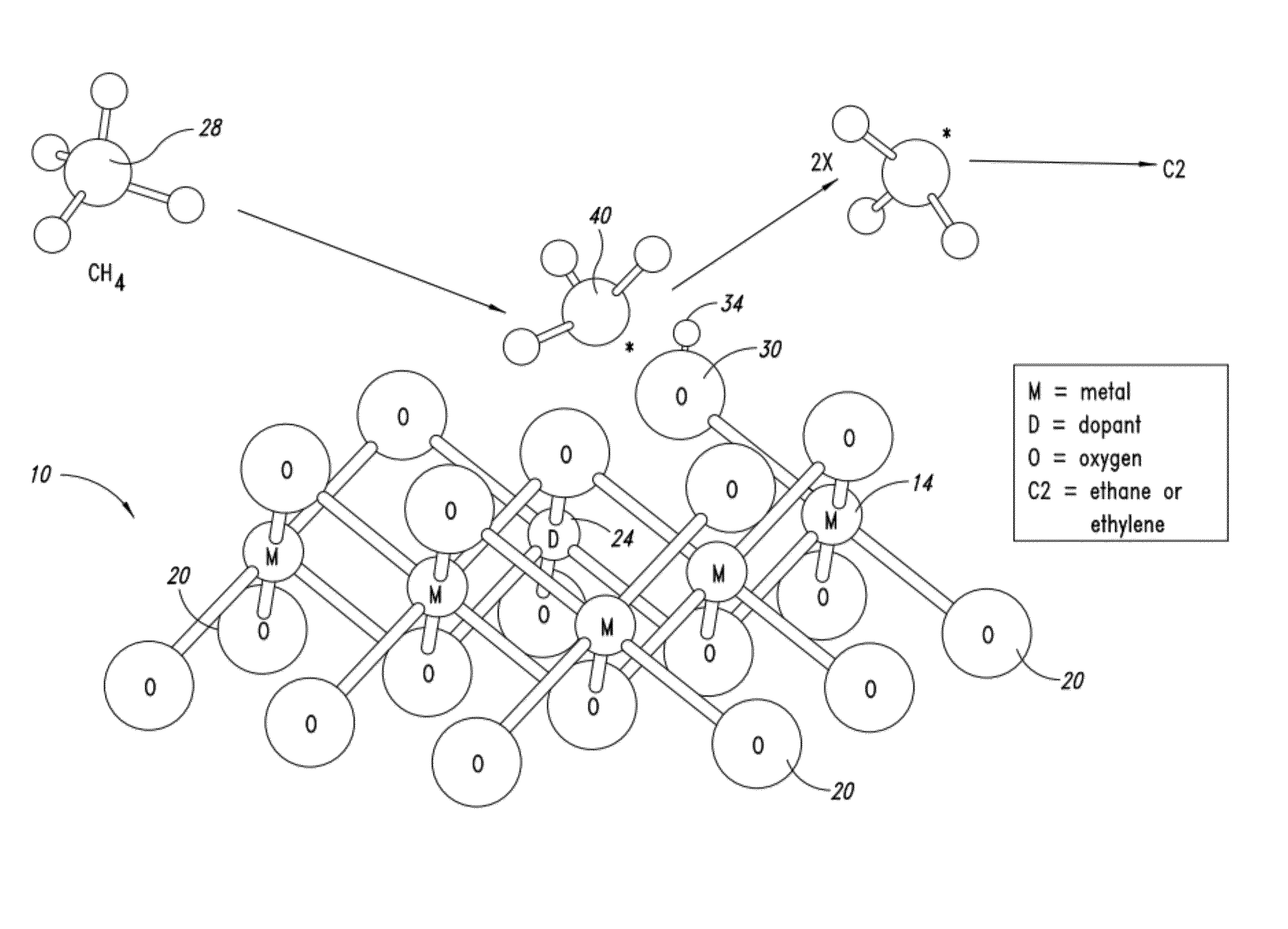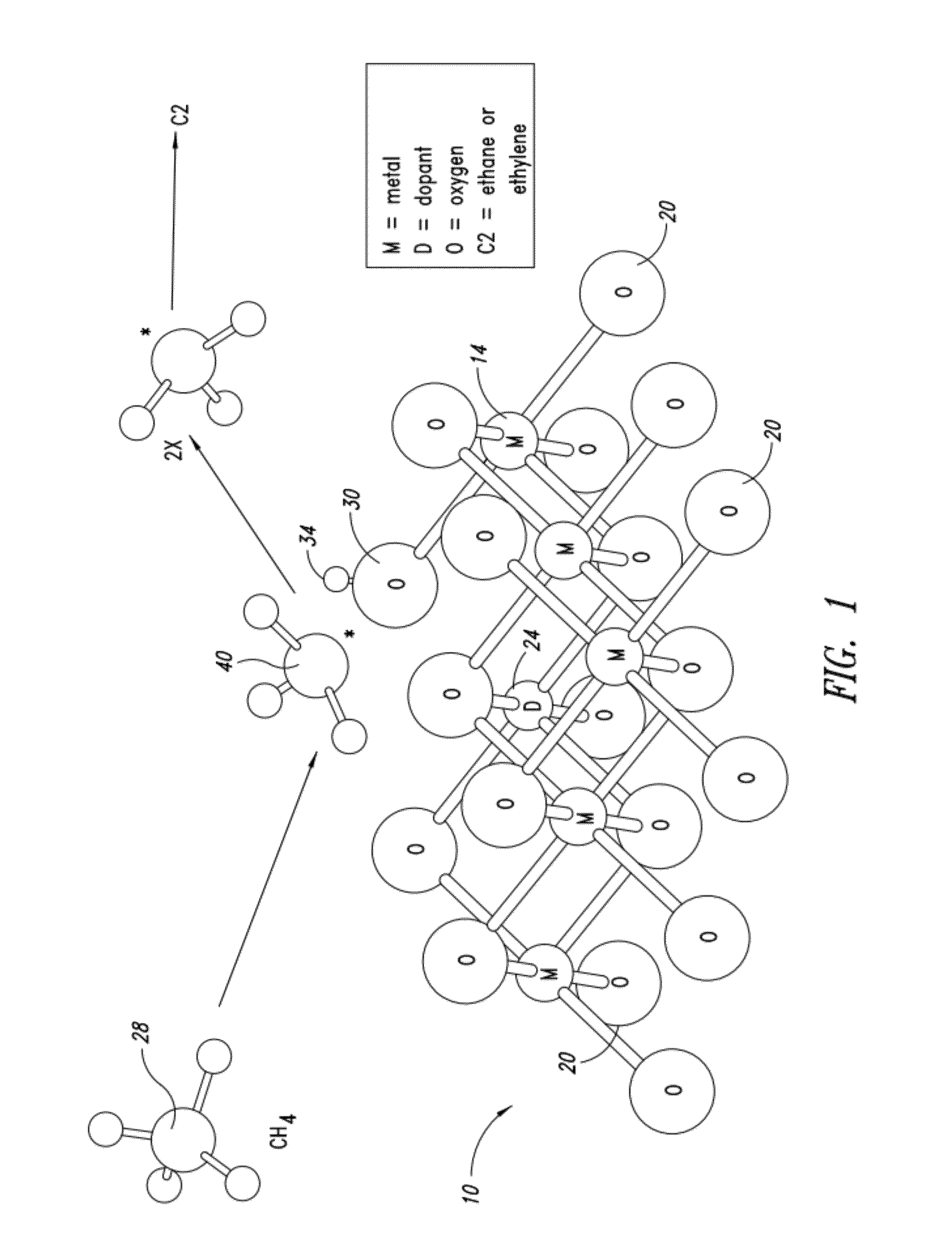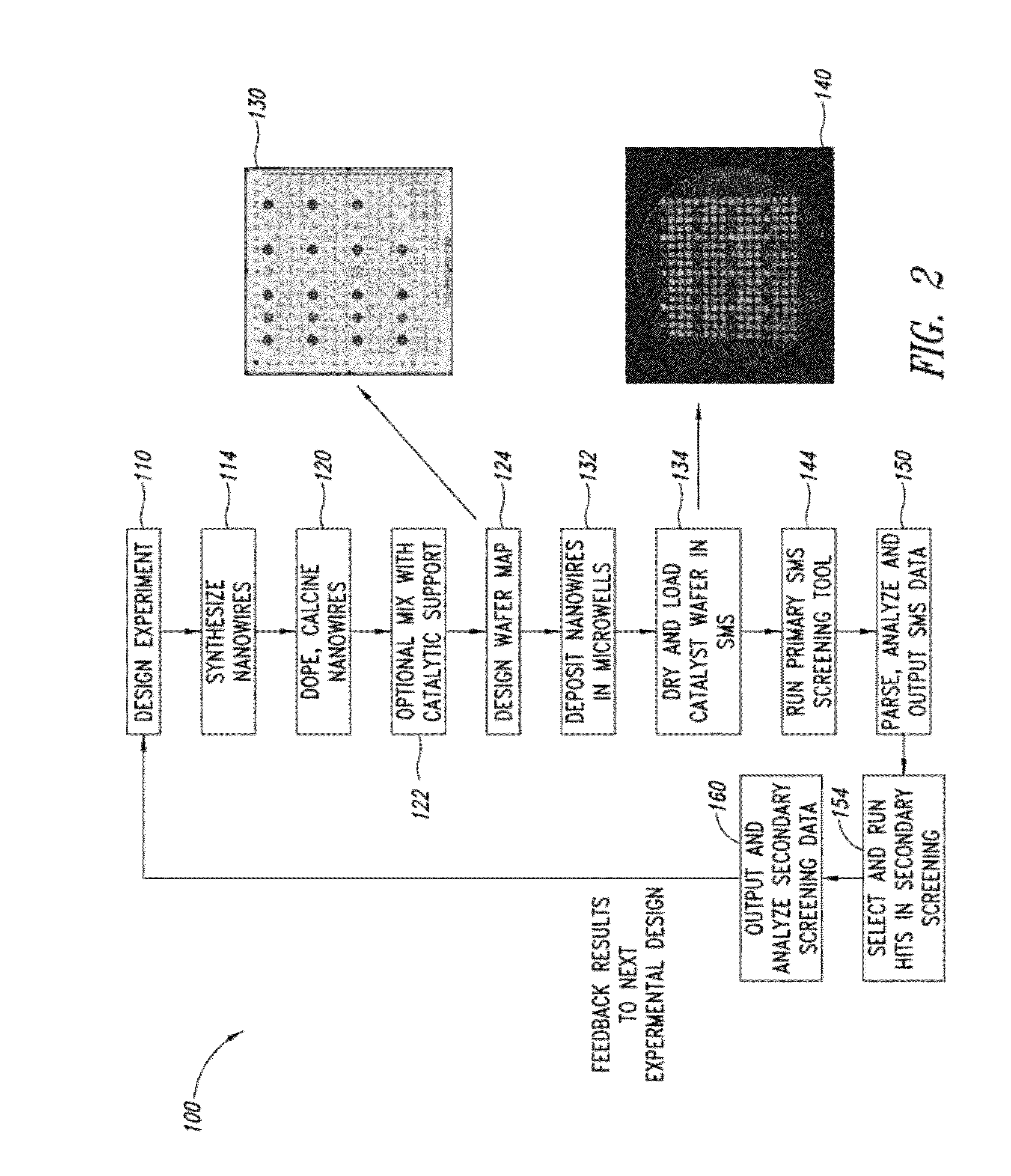Nanowire catalysts
a technology of nanowires and catalysts, applied in the field of nanowire catalysts, can solve the problems of reducing the yield of undesired side products, affecting the efficiency of catalysts, and often limiting the rate of reactant adsorption
- Summary
- Abstract
- Description
- Claims
- Application Information
AI Technical Summary
Benefits of technology
Problems solved by technology
Method used
Image
Examples
example 1
Genetic Engineering / Preparation of Phage
[0463]Phage were amplified in DH5 derivative E. coli (New England Biolabs, NEB5-alpha F′ lq; genotype: F′ proA+B+laclq Δ(lacZ)M15 zzf::Tn10 (TetR) / fhuA2Δ(argF-lacZ)U169 phoA glnV44 φ80Δ(lacZ)M15 gyrA96 recA1 endA1 thi-1 hsdR17) and purified using standard polyethylene glycol and sodium chloride precipitation protocols as described in the following references: Kay, B. K.; Winter, J.; McCafferty, J. Phage Display of Peptides and Proteins: A Laboratory Manual; Academic Press: San Diego (1996); C. F. Barbas, et al., ed., Phage Display: A Laboratory Manual; Cold Spring Harbor Laboratory Press, Cold Spring Harbor, N.Y., USA (2001); and Joseph Sambrook and David W. Russell, Molecular Cloning, 3rd edition, Cold Spring Harbor Laboratory Press, Cold Spring Harbor, N.Y., USA, 2001.
example 2
Preparation of Phage Solutions
[0464]The phage solutions were additionally purified by centrifuging at an acceleration of 10000 g at least once (until no precipitated material was observed), decanting the supernatant and splitting it in 50 ml containers, which were then stored frozen at −20° C. The frozen phage solutions were thawed only shortly before being used.
[0465]The concentration of the phage solutions was measured using a UV-VIS spectrometer. The concentration of each of the frozen phage aliquots was measured prior to use. This spectroscopic method relies on the absorption of the nucleotides in the DNA of the phage and is described in more detail in “Phage Display: A Laboratory Manual” by Barbas, Burton, Scott and Silverman (Cold Spring Harbor Laboratory Press, 2001). The concentration of phage solutions is expressed in pfu / ml (plague forming units per milliliter).
example 3
Preparation Mg(OH)2 Nanowires
[0466]FIG. 12 shows a generic reaction scheme for preparing MgO nanowires (with dopant). First, the phage solution is thawed and its concentration determined according to the method described above. The phage solution is diluted with water to adjust its concentration in the reaction mixture (i.e. with all the ingredients added) to the desired value, typically 5e12 pfu / ml or higher. The reaction container can be anything from a small vial (for milliliter scale reactions) up to large bottles (for liter reaction scale reactions).
[0467]A magnesium solution and a base solution are added to the phage solution in order to precipitate Mg(OH)2. The magnesium solution can be of any soluble magnesium salt, e.g. MgX2.6H2O (X═Cl, Br, I), Mg(NO3)2, MgSO4, magnesium acetate, etc. The range of the magnesium concentration in the reaction mixture is quite narrow, typically at 0.01M. The combination of the phage concentration and the magnesium concentration (i.e. the ratio...
PUM
| Property | Measurement | Unit |
|---|---|---|
| diameter | aaaaa | aaaaa |
| diameter | aaaaa | aaaaa |
| length | aaaaa | aaaaa |
Abstract
Description
Claims
Application Information
 Login to View More
Login to View More - R&D
- Intellectual Property
- Life Sciences
- Materials
- Tech Scout
- Unparalleled Data Quality
- Higher Quality Content
- 60% Fewer Hallucinations
Browse by: Latest US Patents, China's latest patents, Technical Efficacy Thesaurus, Application Domain, Technology Topic, Popular Technical Reports.
© 2025 PatSnap. All rights reserved.Legal|Privacy policy|Modern Slavery Act Transparency Statement|Sitemap|About US| Contact US: help@patsnap.com



